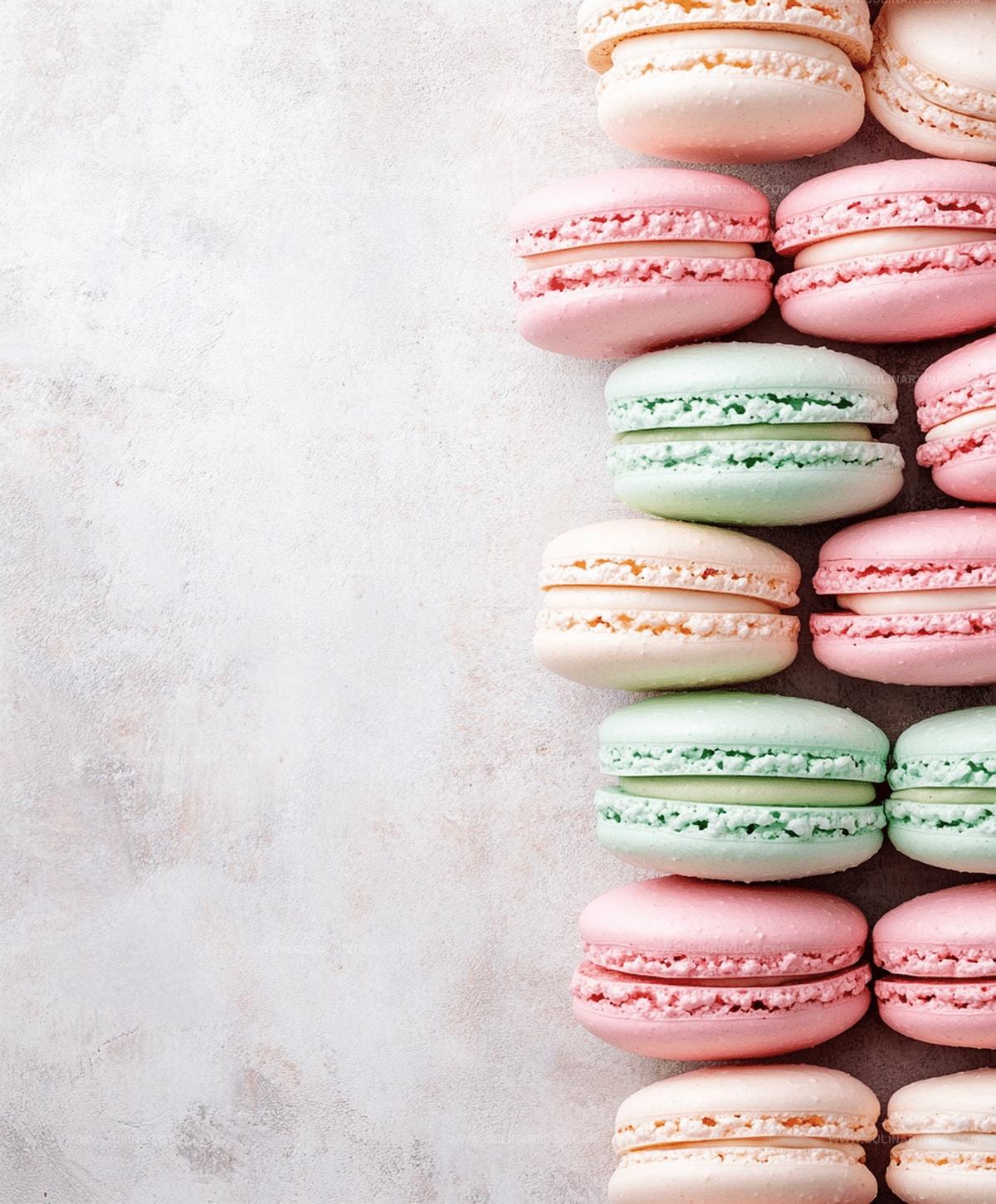Heavenly French Macarons Recipe: Dreamy Homemade Treats
Sweet, delicate french macarons have captivated dessert enthusiasts worldwide with their elegant charm.
These colorful almond meringue cookies demand precision and skill in every delicate bite.
Pastry chefs and home bakers alike cherish the challenge of creating these sophisticated treats.
Mastering the french macarons recipe requires patience and careful technique.
Crisp outer shells and soft, pillowy centers define these beloved French confections.
Each macaron promises a delightful blend of texture and flavor that melts seamlessly on your palate.
French Macarons: Delicate, Colorful, Unforgettable
Ingredients for Classic French Macarons
Dry Ingredients:Wet Ingredients:Finishing Ingredients:How to Master French Macaron Technique
Step 1: Prepare Dry Ingredients
Grab a fine-mesh sieve and gently sift almond flour and powdered sugar together into a clean bowl.
This crucial step ensures a smooth, lump-free mixture that will create the signature silky texture of perfect macarons.
Step 2: Whip Egg Whites
In a spotless mixing bowl, begin whipping egg whites until they become foamy and light.
Gradually sprinkle in granulated sugar while continuing to beat.
Whip the mixture until it forms stiff, glossy peaks that hold their shape when the whisk is lifted.
Step 3: Create Macaron Batter
Carefully fold the sifted dry ingredients into the whipped egg whites using a gentle folding technique.
Add food coloring if desired.
Continue mixing until the batter reaches a smooth, flowing consistency that resembles molten lava – it should ribbon off your spatula and settle back into the mixture within 10-15 seconds.
Step 4: Pipe Macaron Shells
Transfer the batter to a piping bag fitted with a round tip.
Pipe uniform circles onto baking sheets lined with parchment paper or silicone mats.
Maintain consistent size and spacing between each macaron shell.
Step 5: Rest and Develop Skin
Gently tap the baking trays against the counter to release any trapped air bubbles.
Allow the piped macarons to rest at room temperature for 30-60 minutes.
This crucial resting period helps develop a delicate skin on top of the shells, which creates the classic macaron “feet” during baking.
Step 6: Bake to Perfection
Preheat the oven to 300°F (150°C).
Carefully place the rested macaron shells into the oven and bake for 15-20 minutes.
Watch carefully to prevent browning – macarons should remain pale and pristine.
Step 7: Complete and Fill
Allow the baked macaron shells to cool completely on the baking sheet.
Once cooled, carefully remove them and pair matching shells.
Pipe your favorite filling between two shells.
Tips for Chewy, Airy Macarons
Macaron Flavor Swaps and Color Ideas
Serving Macarons for Elegant Occasions
Macaron Storage Essentials
FAQs
French macarons require precision and practice. The key is achieving the right meringue consistency and careful folding technique. Don’t get discouraged if your first attempts aren’t perfect.
Cracks happen due to overmixing batter, incorrect egg white whipping, or not letting shells rest before baking. Always fold gently and allow shells to form a skin before baking.
Your meringue is perfect when it forms stiff, glossy peaks that hold their shape. When you lift the whisk, the peak should stand straight up without drooping.
Print
French Macarons Recipe
- Total Time: 1 hour 18 minutes
- Yield: 12 1x
Description
Delicate French Macarons bring Parisian elegance to your dessert table with their crisp shells and silky smooth filling. Delightful almond meringue cookies offer a perfect balance of texture and sweetness that will enchant pastry enthusiasts.
Ingredients
Dry Ingredients:
- 1 cup (100 grams) almond flour
- 1 3/4 cups (200 grams) powdered sugar
- 1 pinch salt
Wet Ingredients:
- 3 large egg whites (about 100 grams)
- 1/4 cup (50 grams) granulated sugar
- 1/2 teaspoon vanilla extract
Optional Ingredients:
- Food coloring (optional)
Instructions
- Meticulously sift almond flour and powdered sugar through a fine-mesh strainer to eliminate any lumps and create a smooth, uniform powder blend.
- Whip egg whites in a clean, dry bowl using an electric mixer, gradually introducing granulated sugar until the mixture transforms into glossy, stiff peaks with a meringue-like consistency.
- Gently fold the almond flour mixture into the meringue, incorporating food coloring delicately to maintain the delicate air structure; continue blending until the batter achieves a molten, ribbon-like flow.
- Transfer the mixture into a piping bag fitted with a round tip, carefully creating uniform circular shells on parchment-lined baking sheets, maintaining consistent size and spacing.
- Firmly tap the baking trays against the countertop to dislodge trapped air bubbles, then allow macarons to rest at room temperature for 45 minutes, developing a protective skin.
- Preheat the oven to 300°F (150°C), then bake the delicate shells for approximately 16-18 minutes, rotating the tray midway to ensure even coloration and crisp texture.
- Remove from oven and allow shells to cool completely on the baking sheet before gently lifting and assembling with chosen filling between matching macaron shells.
Notes
- Use a kitchen scale for precise measurements to ensure consistent macaron texture.
- Aged egg whites at room temperature create more stable meringue with better volume.
- Sifting dry ingredients multiple times prevents lumps and creates smoother macaron shells.
- Macaronage technique requires gentle folding to maintain meringue’s delicate structure and achieve perfect consistency.
- Prep Time: 1 hour
- Cook Time: 18 minutes
- Category: Desserts
- Method: Baking
- Cuisine: French
Nutrition
- Serving Size: 12
- Calories: 94 kcal
- Sugar: 9 g
- Sodium: 12 mg
- Fat: 5 g
- Saturated Fat: 0.4 g
- Unsaturated Fat: 4.6 g
- Trans Fat: 0 g
- Carbohydrates: 11 g
- Fiber: 1.2 g
- Protein: 3.3 g
- Cholesterol: 0 mg


Michael Reyes
Founder & Lead Recipe Developer
Expertise
Education
Santa Fe Community College
Michael’s love for cooking runs deep, rooted in the bold, colorful flavors of his New Mexico upbringing.
After earning his Culinary Arts Certificate from Santa Fe Community College, he spent years sharpening his skills in kitchens that celebrated traditional Southwestern and Latin American dishes.
He believes cooking should feel approachable and fun, never complicated. When he’s not stirring up new recipe ideas, Michael’s out hiking scenic trails, chatting with farmers at local markets, or chasing the perfect sunset shot for inspiration.